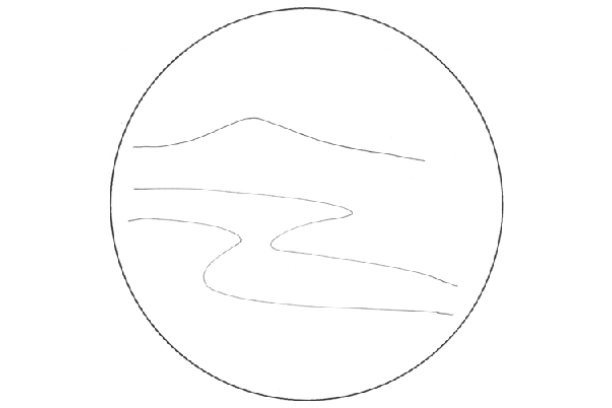
The door of Ch’an is entered by Wu. When we meditate on Wu we ask “What is Wu?” On entering Wu, we experience emptiness; we are not aware of existence, either ours or the world’s.
E-MAIL: admin@relaxmid.com

The ninth picture is entitled “returning to the origin.” At this stage, the person returns to the world, and everything is perceived just as it is by ordinary people.
There is a famous Ch’an saying stating that in the beginning, before one practices, mountains are mountains and rivers are rivers. Then as one penetrates the practice, at a certain point, mountains are no longer
mountains and rivers are no longer rivers. In the end, mountains are again mountains and rivers are again rivers. The ninth picture describes the stage where mountains are again mountains and rivers are again rivers.
The mountains and rivers that were perceived before one started the practice and those that are perceived now are the same, with one very important difference. Before enlightenment they were perceived with a mind of discrimination and attachment. Now there is no attachment. At this level, all things can be used to help sentient beings on the path to enlightenment.
There was a disciple, Yan-shan, who asked Master Wei-shan, “If myriad phenomena suddenly appeared before you, what would you do?”
The master replied, “Green is not yellow, long is not short. Each dharma abides in its own place. It has nothing to do with me.” That is to say, phenomena are perceived, but they have no relation to an enlightened being. However, if this is not fully understood, it can cause problems. Some people go astray and do things which are not correct. They see everything as being the same, but it is not that way. Other people’s wives and husbands are still other people’s wives and husbands; other people’s money is still other people’s money. Worldly conventions are still valid. We should not disregard them. In the ninth stage, all phenomena are just as they are. We don’t treat them in a haphazard, reckless manner.
Sometimes, Ch’an masters disorder phenomena while interacting with students by saying or doing contradictory things, but it always involves practice. If I went around in my daily life and said, “Bananas grow underground and ginger grows on trees, fish fly in the sky and sheep graze under water, ” people would think I’ve just been released from a mental institution. The person at the ninth stage honors worldly conventions.
Student: What about the story of the master who burned the statue of the Buddha? Didn’t he break important conventions?
Shih-fu: He only did that once, before he was a master. He did it to express a truth of the Dharma to his master in order to gain certification that he was enlightened. He would not frivolously chop up the Buddha statue and use it for firewood.
There is another story in a similar vein about a monk who was going along with a heavy wheelbarrow full of mud. The master, sitting beside the road, stuck his leg out in front of the wheelbarrow. The disciple stopped and said, “Would you please move your leg? I must pass.”
The master said, “This here? This isn’t a leg.”
So the disciple said, “Okay then, I’ll keep going, ” and he rolled over the leg and broke it.
Again, this is not an ordinary story, and it is only a single occurence. Throughout all of Ch’an and Zen history it only happened once. Disciples don’t break their masters’ legs. These actions are all performed to certify that, at that moment, the realm which the person is in is not the everyday realm. It’s not the ninth stage, either. It’s closer to the seventh or eighth stage.
PREVIOUS: The Eighth Picture | Ox Herding at Morgan’s Bay
NEXT: The Tenth Picture | Ox Herding at Morgan’s Bay
